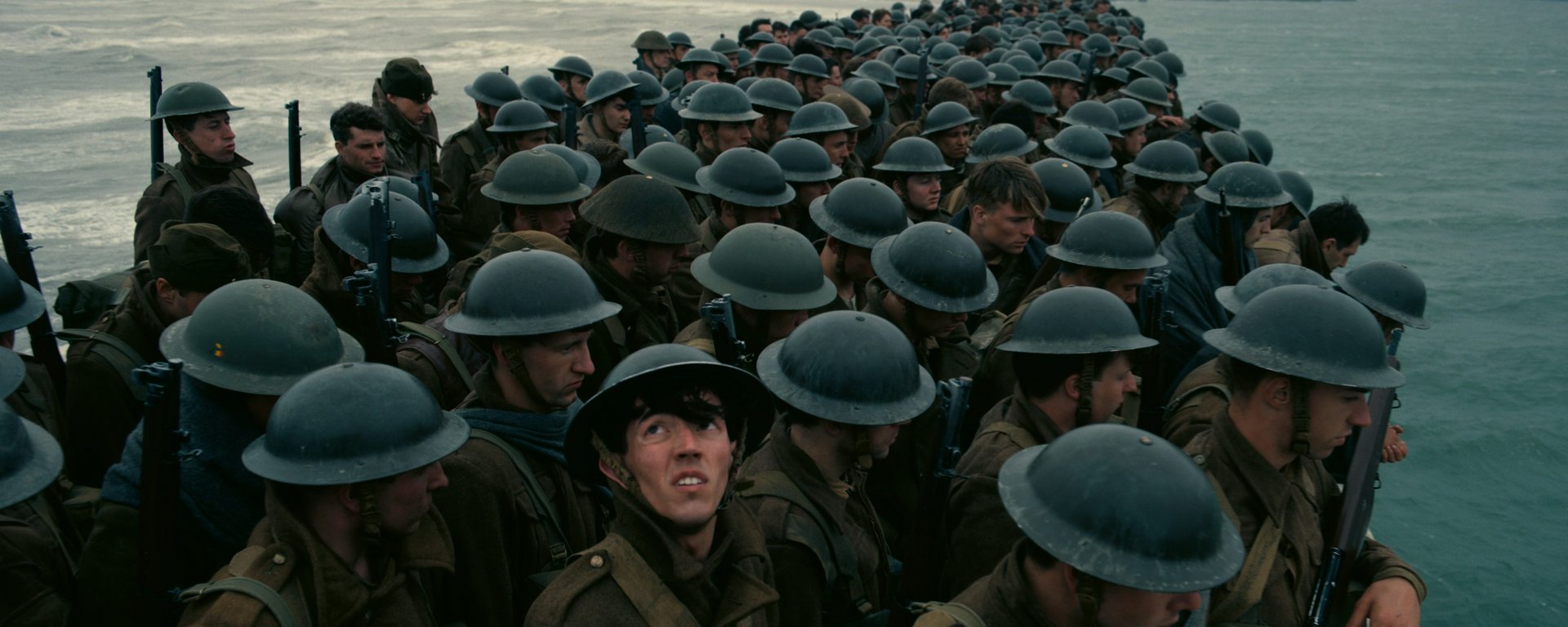
Dunkirk
Dunkirk is a British war film written and directed by Christopher Nolan. It tells the story of the Allied evacuation from Northern France during World War II. Nolan splits the narrative into three distinct but interconnected sections, each taking place within a different time frame. We follow the soldiers stranded on the beach over the course of one week, the voyage of a civilian boat across the English Channel over one day, and the airborne exploits of a team of Spitfire pilots over one hour.
The BBFC classified the film 12A for 'sustained threat, intense sequences, moderate violence, and strong language'. This means that any children under 12 must be accompanied by an adult to see the film in the cinema.
When deciding the classification for a film, Compliance Officers must consider the BBFC Classification Guidelines. We update our Classification Guidelines every four to five years to ensure they reflect public opinion. At 12A, the current Guidelines say that 'there may be moderate physical and psychological threat' but that 'although some scenes may be disturbing, the overall tone should not be'.
In Dunkirk, characters find themselves in various dangerous situations in which their lives are at immediate risk, for example from gunfire, explosions, or drowning. The viewing team noted the length of several scenes created a tense viewing experience, especially as there is very little relief. The sound design and musical score, composed by Nolan's frequent collaborator Hans Zimmer, contributes to this effect. BBFCinsight for films is published on the main BBFC website, and the free BBFC app, together with a longer description of the classification issues. The BBFC's long insight for Dunkirk specifically highlights the music, which is relatively uncommon. However, despite these intense sequences, the film's overall tone is not disturbing in a manner that required a 15 classification. The narrative puts a clear focus on the bravery and resilience of the characters and on their will to survive, and concludes on an uplifting and inspiring note.
The Compliance team also noted clear mitigations for the action sequences. The film grounds its story in a specific historical event, the Dunkirk missions, which much of the film's audience will likely be familiar with. For younger viewers who may be interested in history, or studying World War II at school, the work has educational appeal.
The educational benefits of a work have contributed to classification decisions in the past, for example, Steven Spielberg's 1998 film Saving Private Ryan. That film is classified 15 rather than 18 in part because it was felt the educational benefits of making the work available to older teenagers outweighed the likelihood of upsetting some viewers.
Unlike Saving Private Ryan, however, which features scenes of strong bloody violence, Dunkirk's depiction of wartime violence fits comfortably within the Guidelines at 12A. These state that 'there may be moderate violence but it should not dwell on detail' and that 'there should be no emphasis on injuries or blood'. Violent scenes include aerial dogfights, shootings and people caught in a fire at sea, but there is little to no focus on the kind of stronger detail that would require a higher classification.
Finally, Dunkirk contains infrequent strong language ('f**k'), which is also permitted at 12A.